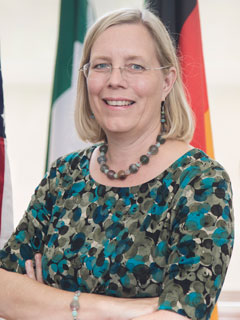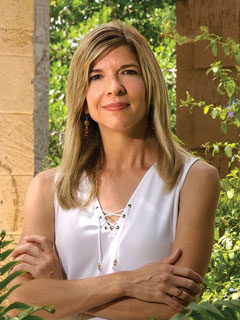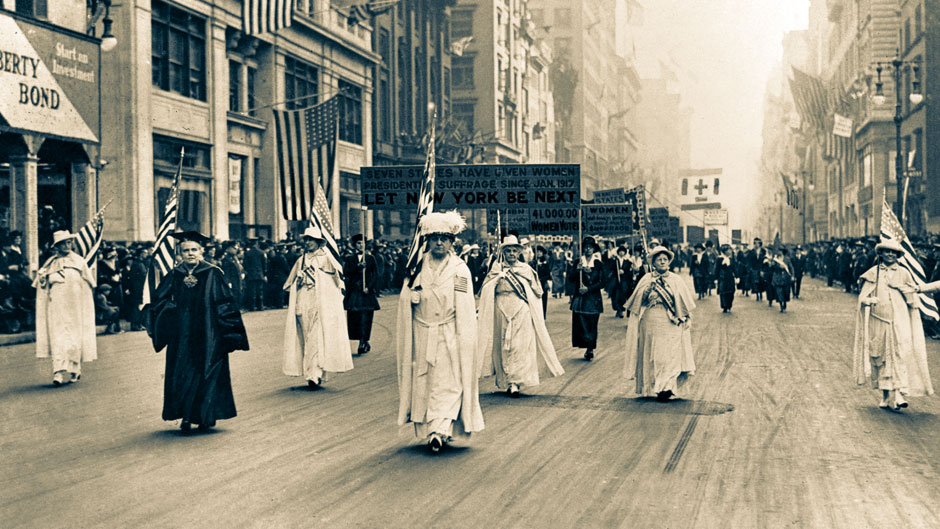Today, 100 years after the passage of the 19th Amendment gave women the right to vote and hold elected office, they are flexing their political muscle like never before.
Even before U.S. Sen. Kamala Harris became Democratic candidate Joe Biden’s running mate last week, women were destined to play a critical part in the election, Louise K. Davidson-Schmich, a University of Miami political science professor, pointed out.
Why? For starters, women often show up to the polls more than men. Since the 1960s, a growing number of women in the United States have exercised their hard-won right, according to the Center for American Women and Politics. And for the past 40 years, a higher percentage of women vote than men. For example, in the 2016 presidential election, 63.3 percent of eligible women voted, while 59.3 percent of men cast a ballot.

“If women continue to vote at higher rates than men, their votes will determine the result of the popular vote,” said Davidson-Schmich.
In addition, events like Hillary Clinton’s narrow 2016 loss to become the first woman U.S. president, the massive Women’s March a few months later, and the #MeToo movement against sexual assault have helped spark an uptick in female and minority candidates running for office, she added. “A lot of women felt their concerns were not reflected in politics, and they could not rely on men to represent them, so they needed to take things into their own hands,” she said.
The 2018 midterm elections highlighted this sentiment when a record-breaking 117 women were elected to Congress, helping to tip the majority in the House of Representatives to the Democrats.
“Women have really acted on that right to vote,” Davidson-Schmich said, noting that only recently have large numbers of women decided to enter the political fray. “And now, they are embracing the full package of suffrage because women are running for office at higher rates. It took a century, but we’re getting there.”
In the past, according to Davidson-Schmich, many women preferred not to seek elected office because of the harassment their gender regularly faces, which New York Congresswoman Alexandria Ocasio-Cortez highlighted in a recent speech on the House floor, after an angry Florida congressman insulted her with profanity.
“That kind of treatment is why a lot of women did not want to run for office, but now we’re seeing women push back against those barriers,” she said, noting that women are still grossly underrepresented in Congress—making up just 23.6 percent of the House and 25 percent of the Senate.
But in this year’s elections, even more women are running for Congress, setting new records for the number of women running for office, and possibly for more women holding office in 2021.
Yet it’s unclear what impact the novel coronavirus pandemic will have on these elections. Since women often factor issues like childcare and education into their choice of candidate, there may be a major shift in typical voting patterns, Davidson-Schmich explained. In the past few months, women have likely noticed some shortcomings in our health care system, the national struggle to reopen schools, and for many to find childcare. And all voters consider the economy strongly in their choice of candidates, Davidson-Schmich added.
“Those are all issues that female voters are more concerned about than men, so women may be more likely to defect from Trump than men,” she said.
History shows that adversity often ushers in great change in the nation. The women’s suffrage movement in the U.S., which led to the passage of the 19th Amendment, occurred alongside a global shift in perspectives after World War I, when many nations were striving to include men of all incomes— not just the rich—and religions in the electorate, as well as women.

During the early 1900s the U.S., in particular, was going through an unstable time when Blacks and laborers were joining women in demanding changes.
“There was a desire among many to reform America’s national identity,” said Robin Bachin, the University’s Charlton W. Tebeau Associate Professor of History and assistant provost for civic and community engagement. “It was a really volatile moment and there was a rethinking of what America could look like, with a focus among some reformers on labor, the rights of Blacks, and the rights of women.”
Therefore, while the suffrage movement was part of an effort for women to gain rights, it was part of a wider push for civil rights, Bachin said. Yet, even as the 19th amendment was ratified giving women voting rights, Blacks were facing the restrictions imposed by Jim Crow laws, poll taxes, and literacy tests, making the freedoms women had just won unavailable to Blacks and muting their voices in politics. It would not be until the Voting Rights Act of 1965 that Blacks were able to cast a ballot across the nation, and even today, underserved communities still struggle to exercise that right.
“What we’ve seen in the last decade or so is that the kinds of things that make it more difficult for people to vote are being put in place,” Bachin said, citing voter ID laws, reduced early voting periods, and the possibility of mail-in ballots not being counted in November. “We haven’t reached a moment where we can say that everyone has equal access to the right to vote.”

